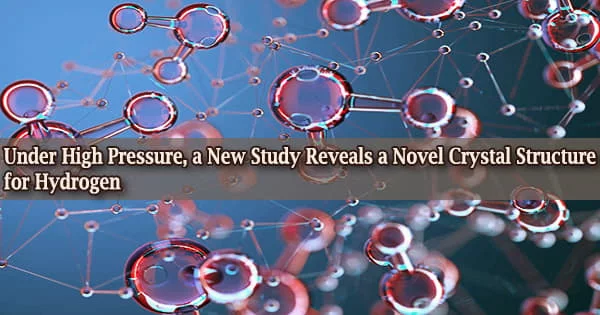The periodic table’s elements can exist in a variety of forms. Carbon, for example, can be found as diamond or graphite, depending on the conditions at the time of formation. Crystal formations created in ultra-high-pressure conditions are particularly relevant because they reveal information about planet formation.
However, reproducing such settings in a laboratory is difficult, thus materials scientists frequently rely on simulation projections to find out if such structures exist. Hydrogen is particularly essential in this regard for studying the distribution of matter in the cosmos and the behavior of large gas planets.
However, due to the difficulties of conducting experiments involving high-pressure hydrogen, the crystal structures of solid hydrogen created under high pressure are still in dispute.
Furthermore, the structural pattern is determined by a precise balance of components, including electric forces on electrons and quantum mechanics fluctuations, which are particularly large for hydrogen, making crystal phase predictions much more challenging.
A global team of researchers led by Professor Ryo Maezono and Associate Professor Kenta Hongo of Japan Advanced Institute of Science and Technology recently published a collaborative study in Physical Review B that revealed various crystal structures for hydrogen at low temperatures near 0 K and high pressures using an ingenious combination of supercomputer simulations and data science.
The hydrogen crystal problem is one of the most challenging and intractable problems in materials science. Depending on the type of approximation used, the predictions can vary greatly and avoiding approximations is a typical challenge. With our result now verified, we can continue our research on other structure prediction problems, such as that for silicon and magnesium compounds, which have a significant impact on earth and planetary science.
Professor Ryo Maezono
“For crystal structures under high pressure, we have been able to generate several candidate patterns using a recent data science method known such as genetic algorithms etc. But whether these candidates are truly the phases that survive under high pressure can only be determined by high-resolution simulations,” explains Prof. Maezono.
Using a technique called “particle swarm optimization” and density functional theory (DFT) calculations, the team looked for various possible structures that can be formed with 2 to 70 hydrogen atoms at high pressures of 400 to 600 gigapascals (GPa) and estimated their relative stability using first-principles quantum Monte Carlo method and DFT zero-point energy corrections.
The search yielded ten previously undiscovered crystal formations, including nine molecular crystals and one mixed structure, Pbam-8, which consists of atomic and molecular crystal layers that alternate.
They discovered, however, that all ten structures had structural dynamic instabilities. To achieve a stable structure, the researchers loosened Pbam-8 in the direction of instability, resulting in P21/c-8, a novel dynamically stable structure.
“The new structure is a promising candidate for the solid hydrogen phase realized under high-pressure conditions such as that found deep within the Earth,” says Dr. Hongo.
The new structure was found to be more stable than Cmca-12, which had previously been recognized as a valid candidate in the H2-PRE phase, one of the six structural phases known for solid hydrogen at high pressure (360 to 495 GPa) that is stable at temperatures approaching 0 K.
The researchers double-checked their findings by comparing the infrared spectra of the two complexes, which revealed a pattern that is typical of the H2-PRE phase.
While this is an interesting finding, Prof. Maezono explains the significance of their results: “The hydrogen crystal problem is one of the most challenging and intractable problems in materials science. Depending on the type of approximation used, the predictions can vary greatly, and avoiding approximations is a typical challenge. With our result now verified, we can continue our research on other structure prediction problems, such as that for silicon and magnesium compounds, which have a significant impact on the earth and planetary science.”





